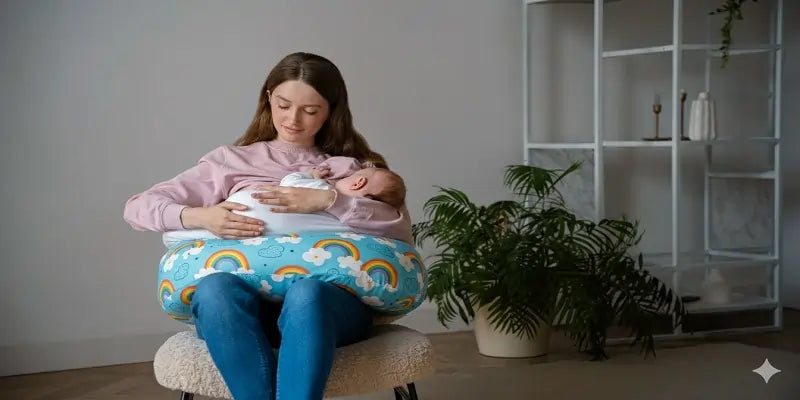
How Technology Can Help You Sleep Better
Those who don’t get quality sleep at night only know the importance of sleep for staying healthy. People are continuously looking for ways that can help them sleep better. This is why the global sleep market, featuring sleep technology as well as other sleep-related products and services, has grown by more than $100 billion over the last four years.
Sleep technology includes devices and apps designed to monitor, improve, and promote healthy sleeping patterns, also referred to as excellent sleep hygiene. When it comes to sleep technology, there's something for everyone, including wearables, non-wearable trackers, smart sleep masks, blue-light blocking eyewear, smart beds, and more.
These apps, wearable technologies like fitness trackers, smart beds, and external monitors connect the bedroom to the internet of things (IoT), as well as gadgets designed to improve sleep quality by adjusting light, noise, temperature, and humidity. In this blog, we'll discuss sleep technology, devices that can help you sleep better, and how to use sleep technology efficiently.
5 Popular Sleep Devices
When it comes to sleep tech gadgets, there are so many choices it can be overwhelming to decide where to start. Here are our top five picks for the best types of sleep devices to add to your bedtime routine.
Sleep Trackers
Have you heard of devices or apps that can track your sleep? They can help you understand your sleep patterns by tracking the length and quality of your sleep. There are so many types of sleep trackers with plenty of features. These wearable and "nearable" technology gadgets can monitor your heart rate, breathing patterns, and body movement and deliver feedback to help you sleep better.
You can usually wear one on your finger, strap one to your wrist, or set one on your bedside, depending on the gadget. Some trackers are able to track sleep duration, sleep quality, sleep phases, and environmental factors such as room temperature and light exposure. Many of these devices or programmes provide a "sleep score," with each giving different kinds of sleep data which add to the score.
Blue Light Filters
Before going to bed, do you use a phone or tablet? These screens emit blue light, which tricks your brain into thinking it's daytime, making it difficult to fall asleep. Blue light is a light frequency that informs our bodies that it is not yet time to sleep. It is naturally produced by the sun, various household light sources, and screens.
Blue light helps us stay awake during the day. However, exposure to it at night affects our sleep pattern. If you can't avoid blue light at night, you can wear blue light blocking glasses for many hours before bedtime to train your body to believe it's already night time.
White Noise Machines
Do outdoor noises, such as traffic or neighbors, make it difficult for you to fall asleep? White noise machines are an excellent approach to provide steady and unobtrusive sound. To drown out unpleasant noises, use a white noise machine or an app that plays relaxing sounds like rain or ocean waves. This can help you relax and fall asleep quickly.
There are numerous white noise machine alternatives on the market, and many include pink noise, brown noise, and other sounds in addition to white noise. They also have more functions than a box fan, such as spa and nature sounds, simple mobility, volume controls, and nightlight options.
Sleep Apps
There are plenty of apps available to help you relax and unwind before bedtime. They can take you through breathing exercises, meditation, or even bedtime stories to help you relax and prepare for sleep.
Sleep apps like Headspace, Calm, and Sleep Reset include meditation and breathing exercises, as well as stretching and bedtime stories. The Oura Ring includes built-in monitors that track sleep, exercise, heart rate, and body temperature.
Smart Mattresses
Yes, mattresses can be smart, too! Some mattresses come with sensors to monitor your sleeping habits and movements. They can provide you feedback on how well you sleep and even change the temperature or hardness to make you more comfortable.
Even though we don't see much of it in India, it is available if needed. Using your movements as a guide, a smart bed can automatically change its hardness and support throughout the night. In order to guarantee ideal sleeping conditions, it also has capabilities like temperature balancing and snore detection.
Tips for Using Sleep Technology:
- Set a Bedtime Routine: Create a relaxing bedtime routine that includes using sleep technology. This can signal to your body that it’s time to wind down and prepare for sleep.
- Limit Screen Time: Try to avoid using screens at least 30 minutes before bed, even with a blue light filter. This gives your brain time to relax and produce melatonin, a hormone that helps you sleep.
- Experiment and Adjust: Not all sleep technology works the same for everyone. Experiment with different apps or devices to find what helps you sleep better, and don’t be afraid to adjust settings to suit your needs.
Conclusion
Using technology to improve your sleep can be easy and fun! Remember, the goal is to create a sleep environment that’s comfortable and relaxing for you.
There are some things that we like traditionally, one such thing is a pillow. And still, if you are looking for a better version of your pillow, you can try a memory foam pillow. Memory foam offers a good amount of support. It holds the head and neck supportively and maintains its shape. This can make it great for those suffering from neck and back pain.








